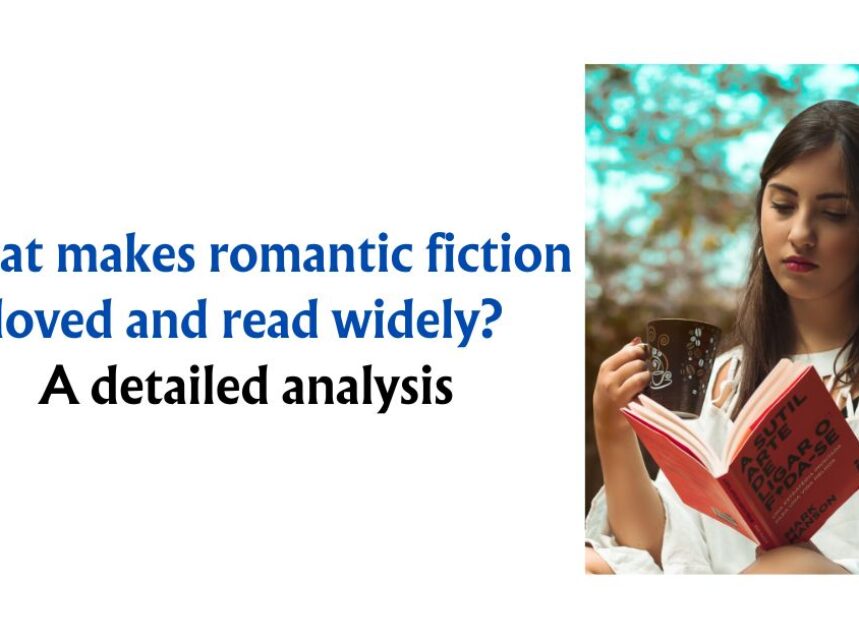
The Reasons People Like Reading Romantic Novels – an analysis
The allure of romantic novels has long been a phenomenon that transcends generations, captivating readers of all ages, but perhaps nowhere is this fascination more pronounced than among the youth. In the labyrinth of literature, where genres abound and preferences vary, the perennial appeal of romantic fiction to the younger generation is a narrative unto itself. This enduring attraction is not merely happenstance; rather, it is rooted in the intersection of human nature, societal dynamics, and the unique developmental stage of youth.
At its core, the penchant for romantic novels among the youth can be traced to the universal human desire for connection and understanding. Adolescence, with its tumultuous journey of self-discovery and burgeoning emotions, provides a fertile ground for the exploration of love, relationships, and the intricacies of the human heart. Romantic fiction, with its kaleidoscope of emotions, allows young readers to navigate the complexities of love in a vicarious yet profoundly personal manner. It becomes a mirror reflecting their own experiences, and aspirations, and, at times, offering solace in the face of the uncertainties that accompany youth.
Moreover, the appeal of romantic novels to the youth is embedded in their ability to serve as a lens through which societal norms, expectations, and evolving gender dynamics are scrutinised. These novels often grapple with themes of identity, agency, and the pursuit of authentic connections, resonating with the contemporary concerns of the youth. In a world undergoing rapid transformations, where traditional narratives are being redefined, romantic fiction becomes a compass guiding young readers through the uncharted territories of modern love and relationships.
The immersive nature of romantic novels also plays a pivotal role in their popularity among the youth. In an era dominated by visual stimuli and fleeting attention spans, the ability of romantic fiction to create vivid, emotionally charged worlds provides a welcome respite. These novels offer an escape into realms of passion, intrigue, and timeless love stories, allowing readers to temporarily transcend the complexities of their own lives.
In essence, the allure of romantic novels to the youth is a confluence of emotional resonance, societal relevance, and the timeless quest for connection. As young readers navigate the labyrinth of life, these novels become trusted companions, offering not just tales of love but narratives that mirror the profound, multifaceted journey of youth itself. The enduring popularity of romantic fiction among the younger generation is a testament to its ability to capture the essence of the human experience and provide a sanctuary where the intricacies of love and relationships are explored, understood, and cherished.
Now, there is another concept that has attracted readers at length – second chance romance novels. Second chance, as the name suggests, is about life giving a second chance to protagonists and (possibly) lovers to reunite and celebrate life together. To be more factual and simple for readers to understand, let us discuss this concept in brief. Second chance romance novels, with their poignant narratives and emotionally charged plots, delve into the complexities of love, loss, and the prospect of rediscovery. On many occasions, and mostly, these novels carve a unique niche in the literary landscape by exploring the theme of love rekindled after setbacks, offering readers a compelling journey through the intricate dance of past and present emotions. With characters navigating the delicate balance between heartbreak and hope, second chance romance novels captivate readers with their exploration of the resilience of love and the transformative power of second opportunities. In the world of fiction, where love stories often mirror the intricacies of real-life relationships, second chance romance novels stand as a testament to the enduring belief that love, once lost, can find its way back in unexpected and redemptive ways.
If you want to explore, here is a detailed list – Best Second Chance Romance Books
Romantic fiction, the genre cherished by readers for its exploration of love and relationships, encompasses several key features:
1. Emphasis on Love and Relationships: At the core of romantic fiction is a focus on love, with narratives often revolving around romantic relationships and the complexities of human connection.
2. Emotional Intensity: Romantic fiction is known for its heightened emotional intensity, where characters experience a range of feelings, from passion and joy to heartbreak and despair.
3. Character-Driven Plots: The development of characters and their emotional journeys takes precedence in romantic fiction. Readers often become deeply invested in the lives and relationships of the protagonists.
4. Happy Endings: While not a strict rule, many romantic novels conclude with a happy and satisfying resolution for the main characters, providing a sense of fulfilment for readers.
5. Varied Settings: Romantic fiction can unfold in diverse settings, from historical periods and fantastical realms to contemporary urban landscapes, offering readers a wide array of backdrops for love stories.
6. Subgenres: The genre encompasses various subgenres, including historical romance, contemporary romance, paranormal romance, and more, catering to different preferences within the broader theme of love.
7. Exploration of Themes: Beyond love, romantic fiction often explores themes such as self-discovery, forgiveness, and personal growth, adding depth to the narrative.
8. Intriguing Conflict: Compelling conflicts, whether internal or external, drive the plot forward and add tension to the romantic relationships, keeping readers engaged.
9. Diversity of Characters: Romantic fiction embraces diverse characters, allowing readers to encounter protagonists with different backgrounds, cultures, and experiences.
10. Appeal to Emotions: Successful romantic fiction elicits a strong emotional response from readers, making them laugh, cry, and empathise with the characters’ journeys.
In essence, romantic fiction weaves tales of love that resonate with readers by exploring the complexities of the human heart and the transformative power of romantic connections. And therefore, something that appeals to their emotions and strikes the heart, directly, is always loved by readers!
By Parakashtha for The Book Blog